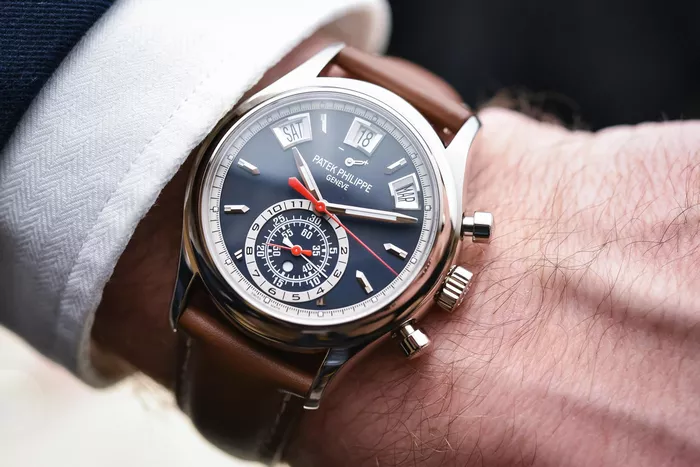The world of luxury watches is filled with iconic designs that have stood the test of time. Among these, the Patek Philippe Nautilus holds a special place. Known for its distinctive design and unparalleled craftsmanship, the Nautilus is a testament to the ingenuity and vision of its designer. This article delves into the history, design process, and impact of the Patek Philippe Nautilus, providing a comprehensive overview for watch enthusiasts.
History of Patek Philippe
Founding and Early Years
Patek Philippe was founded in 1839 by Antoine Norbert de Patek and François Czapek in Geneva, Switzerland. Initially named Patek, Czapek & Cie, the company quickly gained a reputation for producing high-quality timepieces. In 1851, the company was rebranded as Patek Philippe & Co. after Adrien Philippe joined as a partner.
Innovation and Milestones
Patek Philippe has a long history of innovation. In 1868, the company created the first Swiss wristwatch. In 1932, the Calatrava collection was introduced, setting a benchmark for elegant, round wristwatches. The Nautilus, introduced in 1976, marked another significant milestone in the company’s history.
The Birth of the Nautilus
The Need for a Sporty Watch
In the 1970s, the luxury watch market was undergoing a transformation. The introduction of quartz watches posed a significant challenge to traditional mechanical watchmakers. To stay relevant, Patek Philippe decided to venture into the sports watch segment, which was gaining popularity.
Gérald Genta: The Visionary Designer
The man behind the Nautilus was Gérald Genta, a renowned watch designer. Born in Geneva in 1931, Genta was already an established name in the watch industry by the time he designed the Nautilus. His previous works included the Audemars Piguet Royal Oak, another iconic sports watch.
Designing the Nautilus
Inspiration from the Maritime World
Genta drew inspiration from the maritime world for the Nautilus. The watch’s design was based on the shape of a ship’s porthole, which is evident in its rounded octagonal bezel. This unique design set the Nautilus apart from other watches of its time.
The Design Process
Genta famously sketched the design of the Nautilus in a single night. He envisioned a watch that combined robustness with elegance. The case, featuring a monobloc construction, ensured water resistance, while the integrated bracelet added to its sporty appeal.
Materials and Craftsmanship
The first Nautilus model, the Reference 3700/1, was made of stainless steel. This choice of material was unconventional for a luxury watch at the time but underscored the Nautilus’s sporty character. The watch also featured a distinctive horizontally embossed dial and a screw-down crown for added water resistance.
See Also: How To Set Date On Patek Philippe Nautilus
The Evolution of the Nautilus
Early Models
The initial response to the Nautilus was mixed. While some purists were skeptical of a luxury watch made of stainless steel, others appreciated its bold design. Over time, the Nautilus gained a loyal following, leading to the introduction of new models and variations.
Expanding the Collection
In 1980, Patek Philippe introduced the first Nautilus model for women, the Reference 4700/1. This was followed by various other models, including those made of precious metals and those featuring complications such as a moon phase display and a power reserve indicator.
Modern Iterations
The Nautilus continues to evolve, with modern iterations incorporating advanced materials and technologies. Models such as the Reference 5711/1A, introduced in 2006 to celebrate the 30th anniversary of the Nautilus, have become highly sought-after by collectors.
Impact on the Watch Industry
Redefining Luxury Sports Watches
The Nautilus redefined the concept of a luxury sports watch. Its blend of robustness and elegance set a new standard in the industry. The success of the Nautilus also paved the way for other luxury watchmakers to explore the sports watch segment.
Influence on Other Brands
Genta’s design philosophy, as exemplified by the Nautilus, has influenced numerous other brands. Watches with integrated bracelets, robust cases, and distinctive bezels have become a hallmark of luxury sports watches.
Collectibility and Market Value
The Nautilus is highly collectible, with certain models commanding significant premiums in the secondary market. Limited editions and vintage models are particularly prized, making the Nautilus not just a timepiece but also an investment.
Conclusion
The Patek Philippe Nautilus is more than just a watch; it is a symbol of innovation, craftsmanship, and timeless design. From its inception by Gérald Genta to its evolution over the decades, the Nautilus continues to captivate watch enthusiasts and collectors around the world. Whether you are a seasoned collector or a newcomer to the world of luxury watches, the Nautilus represents a piece of horological history worth exploring.

